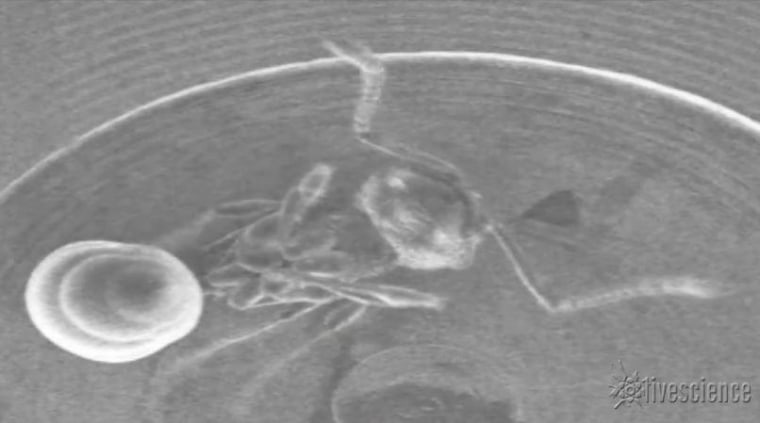What's the best way to keep an insect from exploding in a powerful vacuum? Wrap it in a tiny spacesuit.
Scanning electron microscopes (SEM) provide incredibly detailed images of biological specimens, but the instruments have not been able to image living organisms because of the powerful vacuum environment required.
But now, a team of researchers has developed a way to image mosquitoes and other insects in an SEM, by wrapping them in a substance that keeps the organisms alive, without interfering with the imaging process. [See video of insects wearing tiny spacesuits]

An SEM creates images by scanning a focused beam of electrons across a specimen. To prevent the electrons in the beam from scattering, the scanning must be done in a vacuum. And since biological specimens consist of mostly water, which evaporates in a vacuum and destroys surrounding structures, traditional SEM imaging requires killing and dehydrating the specimens first.
In their study, the research team found a way to image living organisms — namely, insects — by coating them in a very thin, flexible membrane that the researchers call a "nanosuit."
"The thickness is only 50 to 100 nanometers" — roughly one-thousandth the width of a human hair — "and covers the whole body of each organism," said Takahiko Hariyama, a biologist at Hamamatsu University School of Medicine in Japan and lead author of the study, which appeared on Wednesday in the journal Proceedings of the Royal Society B.
The researchers imaged several different kinds of insects, including the mosquito Culex pipiens molestus. The team also imaged a species of shining leaf beetle, Lilioceris merdigera, and the beach-dwelling crustacean Talitrus saltator.
Getting the insects into the nanosuits was easy, Hariyama told Live Science. Researchers simply dipped the insects into the diluted surfactant, a substanceused to prepare specimens for the SEM, or added a tiny drop of the surfactant and removed the excess with a dry piece of paper, he said. Then, the scientists shone the electron beam or plasma on the insect, he added.
The resulting nanosuits were hard on the outside and soft on the inside, and could repair themselves if the insects' movement broke the surfaces.
— Tanya Lewis, Live Science
This is a condensed version of a report from Live Science. Read the full report. Follow Tanya Lewis on Twitter. Follow Live Science @livescience, Facebook & Google+